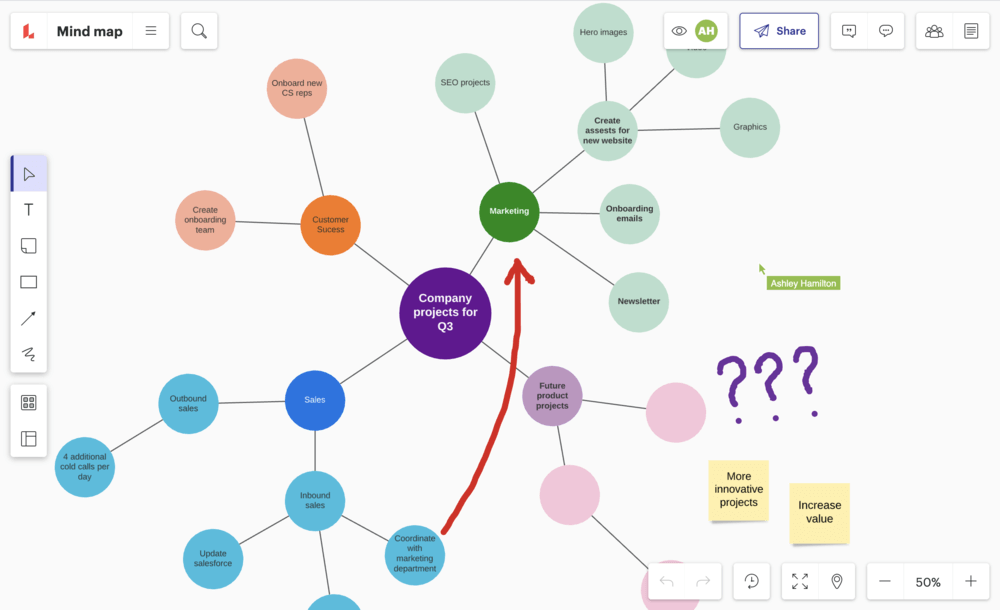This is an Eval Central archive copy, find the original at cense.ca.

A mind map is a powerful, simple organizing tool that features a lot of information on a single page. We use mind maps and other visual tools to communicate relationships between ideas, people, project components and topics with our clients and partners. We present a short introduction to how and why you might want to use mind maps in your work.
A mind map is a visual representation of a project that links actors and actions together. This article focuses on using mind maps, not creating them.
Below is an example from software provider Lucidspark (which is a tool for creating mindmaps) that illustrates what a mind map is and how it can connect ideas and actions together.

Visualizing our Relationships
A search of Google (or any other search engine) will find thousands of visual examples of what a mind map is. There are few ‘essentials’ for mind mapping, which is among its most attractive features.
A complex project is one where there are many things happening at the same time, at different time scales, and involving many interdependencies and actors. That’s just a way of saying: there’s a lot going on.
It doesn’t matter how you organize your mind map only that it is useful. That means it provides information that you can make decisions with and act on. If it does that, it’s a good mind map.
Once we have that in place, the mind map allows us to examine the relationships between the nodes and topics to assess their fit. The expression ‘getting on the same page‘ reflects an ability for all of those looking at the document to have a similar representation of what’s on that page. The mind map allows us to verify relationships between entities, determine gaps or inaccuracies, and explore different ways of connecting things together.
There may not be a single ‘master’ map that is better than all, but there may be a map that is more useful than others.
How to Use Mind Maps
When we use this with clients and partners on projects we aim for the following:
- To examine the assumptions involved in the project
- To explore alternative relationships of fit and see if the map is the best representation of what we are looking at
- To guide the project and keep the topics on track
- To provide a building block for connecting ideas together (in ways that weren’t done previously)
- To map out a system of relationships
- To use colour and visuals to surface feelings, thoughts, and other emotional aspects of the project that might influence the strategy or outcomes
By creating a visual representation we see the whole project and the relationship context. Relationships are the key in any complex system. When we visualize these relationships it allows us to see how the actions in one relationship can affect others. Visual maps can aid us in anticipating possible effects.
(Note: We don’t use the term ‘unintended effects’ – just effects because in complex systems it’s too hard to predict cause and effect with any degree of accuracy).
We continually refer back to our maps to help ensure we are accounting for all relationships of importance throughout the project and not just those that have the most amount of activity within them. It’s incredibly difficult to track this in our heads or in something like a spreadsheet or text document.
Mind maps can be great tools to visualize a lot of information and get you and your collaborators on the same page when it comes to understanding what is going on in a complex system and program. Try it out — they are easy to create and simple to use.
If you want to use this approach to visualizing your programs and using this to help you innovate, contact us – we’d love to hear from you.
The post Mind Maps For Complex Projects appeared first on Cense.